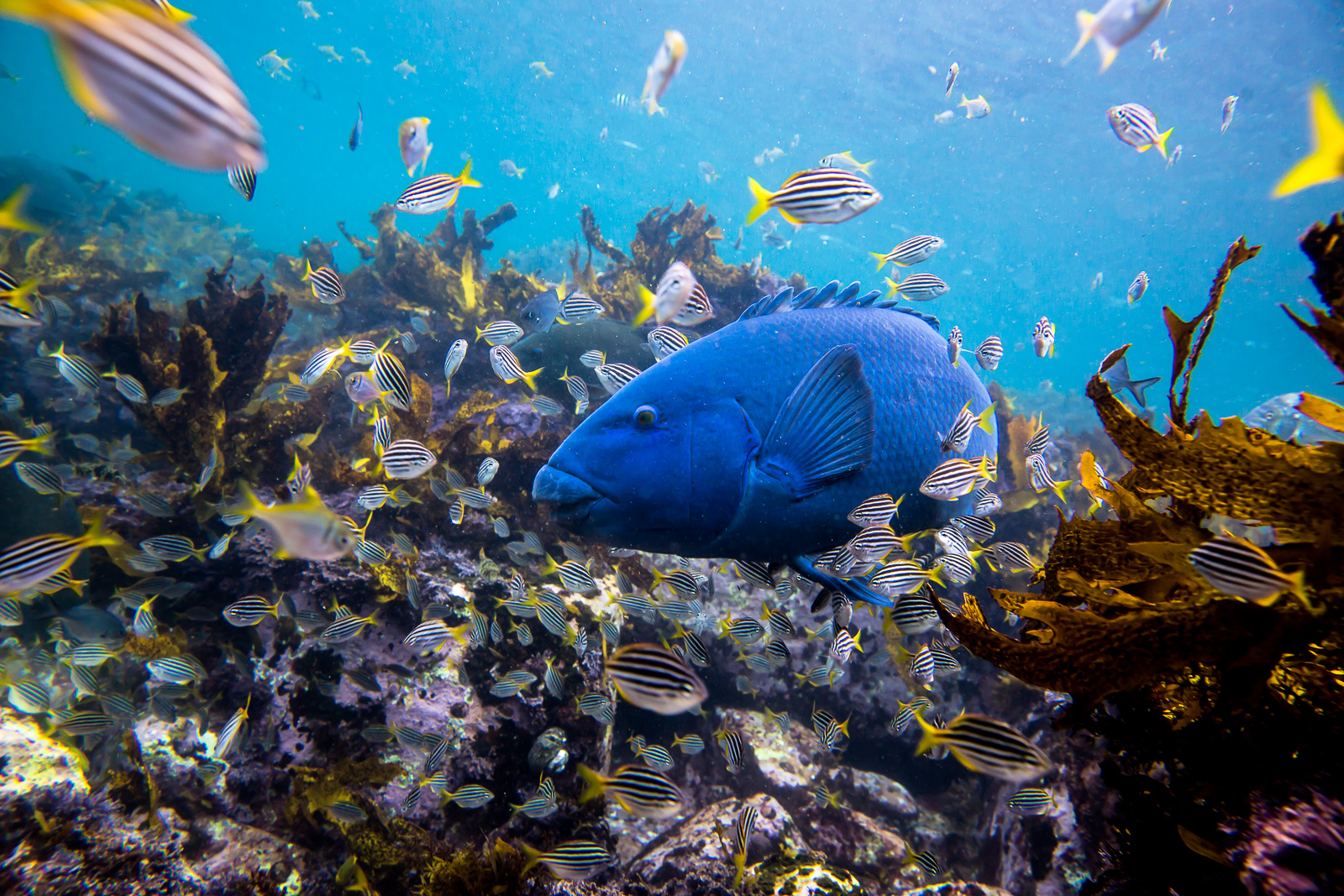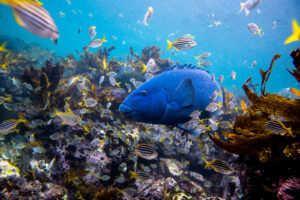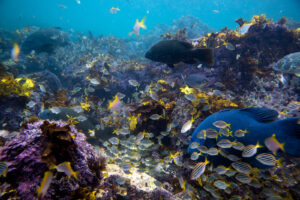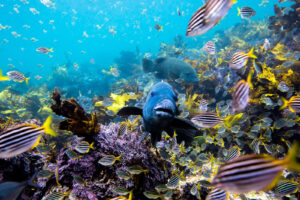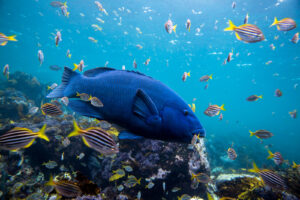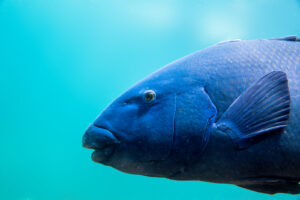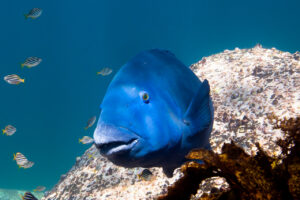The Tales of Bluey go back decades…
Clovelly Beach before Gordon’s Bay (Cloey / Thomo’s for locals) became popular, was infamous for being the home of this giant blue wrasse the locals aptly named “Bluey.”
Locals had coined “Bluey” as far back as the late ’80s and early ’90s.
The tales of this Bluey are many, but the arching history here is not unlike that of Tim Winton’s novel Blueback (newly released as a film). So, if you’re a fan, then a snorkel here is worth it!
‘Bluey’ was unfortunately taken out by a spearfisherman in 2002. Around the same time, the area saw a steep incline in popularity and also attracted a lot of rock fishermen. The Groper population was being targeted, which eventuated in a huge public outcry. Thankfully, some clever folk decided on the creation of the Aquatic Reserve.
This reserve stretches from Bronte to Coogee, with a smaller zone of no Groper fishing/spearing set between Clovelly and Gordon’s Bay. This ultimately saved the Groper population and made way for the next Bluey in the reserve to step up and take the reins.
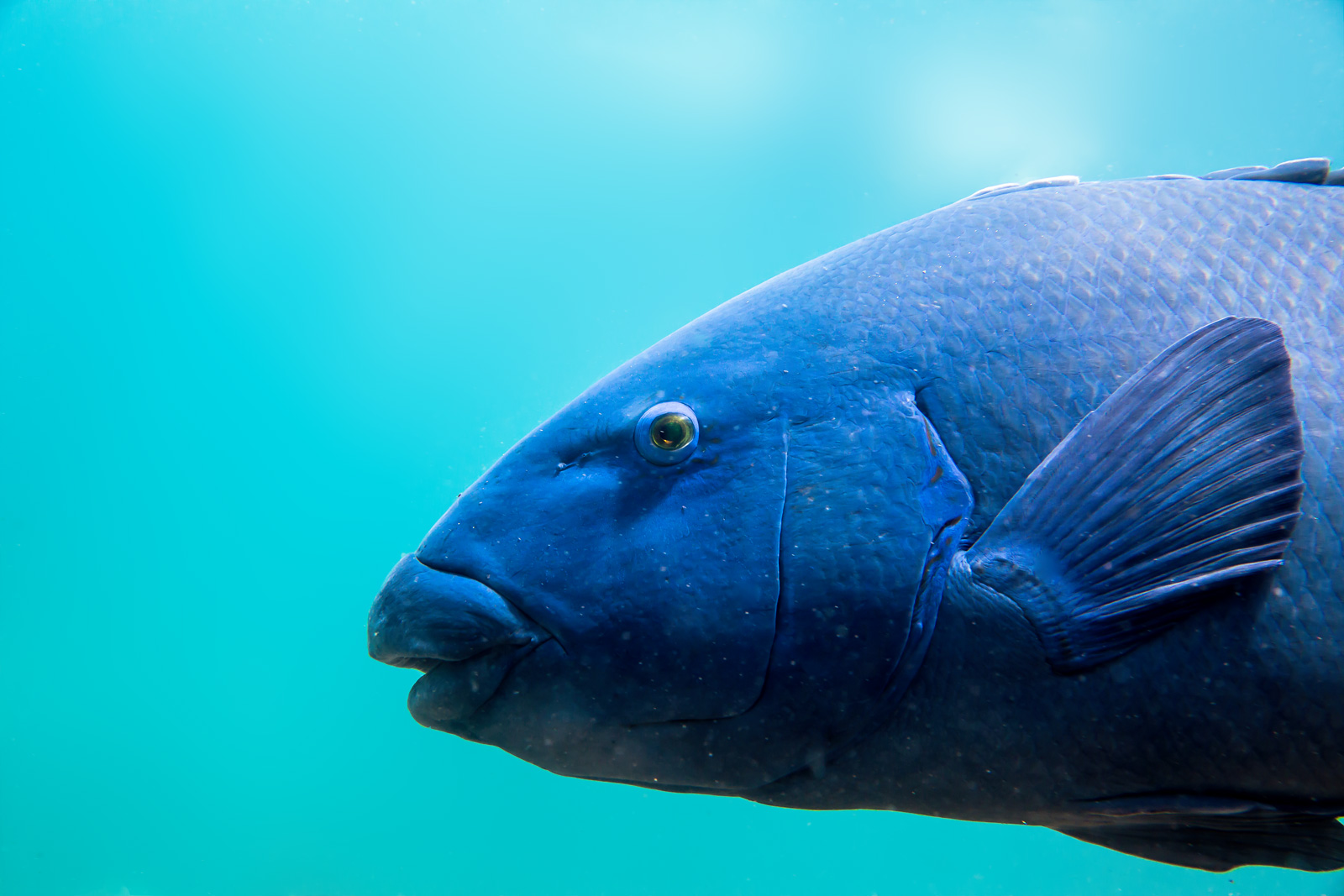
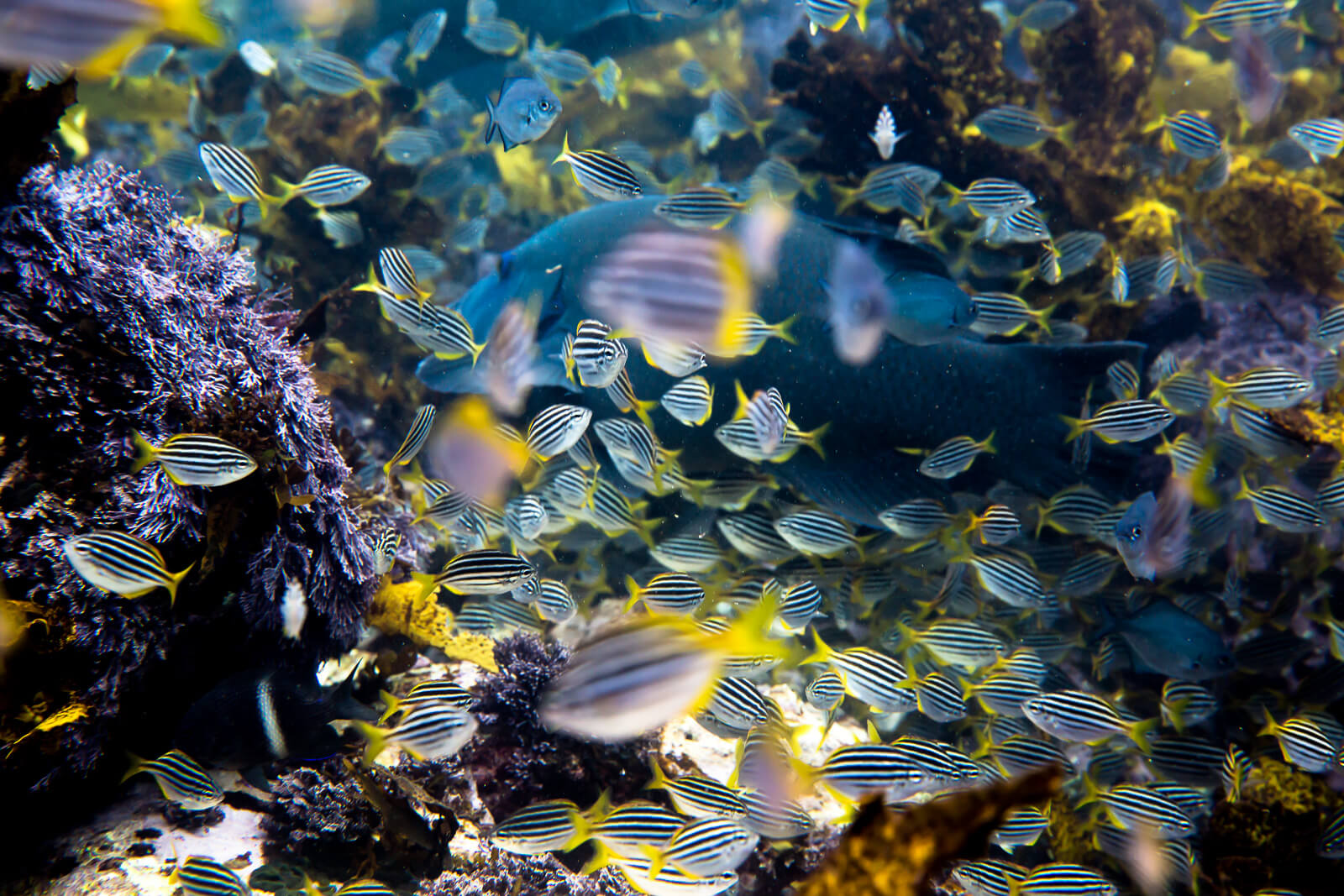
Time well spent
The years I’ve spent between Clovelly and Gordon’s Bay are countless.
I learned to swim in Clovelly and spent the rest of my life between Clovelly, Gordon’s Bay, and Coogee. When I finally decided to begin taking images underwater, I began unintentionally documenting the aquatic reserve. So fortunate, really, simply being active in the area over so many years has created an extensive library of what lives below and above the waters, and a cast of Groper characters that I’ve watched grow over time.
That all being said, my observations are that Clovelly and Gordon’s Bay each have their own dominant male, so two “Blueys.” No need to chase or touch them—both will want to come and investigate what you’re up to if you can manage to stay still at the bottom for a while.
Some Interesting Groper Facts:
- Did you know that the Groper is actually a Wrasse?
While technically not a Groper, it has the common scientific name of “Eastern Blue Groper.” - They change sex.
All Eastern Blue Gropers are born female, and some later change to be males! When they change sex, they also change color! If the male is removed from the small group, the dominant female can change sex to take his place! (Which happened in 2002.) - The bright blue.
The older the male, the more vibrant “blue” they become. - They get old, really old.
Research on the “Eastern Blue Groper” suggests a life span of approximately 35 years. Our friends in Western Australia have the “Western Blue Groper” and suggest 70 years! Either number, 35 or 70, is still incredibly long.
You can see the “Friends of Bluey” page for more gropers in the reserve. Some of them are very distinct, and I’m sure many of you who have already snorkeled here would recognize some, if not all, of them!

Location, Location, Location…
You generally won’t find him (them) in the shallows. The bigger guys prefer the deeper, less frequented waters. Knowing their general location and hiding holes, finding them can take just minutes when the swell and visibility allow it.
The other Gropers, however, like the shallower areas.
-
Bluey above the seaweed
$63.00 – $770.00 -
Bluey beyond the wall
$63.00 – $770.00 -
Bluey family
$63.00 – $770.00 -
Bluey found you
$63.00 – $770.00 -
Bluey hard left
$63.00 – $770.00 -
Bluey Profile
$63.00 – $770.00 -
Bluey the groper
$63.00 – $770.00
Bluey hanging out in Clovelly
There’s plenty of other underwater videos on my YouTube channel as well.

Gordons Bay
The Tales of Bluey go back decades… Gordon’s Bay or Thomo’s to locals A hidden Gem, a place worth keeping secret. But the word got out… A Marine Reserve Part of the Aquatic Reserve that spans from Bronte to Coogee. ? You can see the “Friends of Bluey” page for more gropers in the reserve.…

